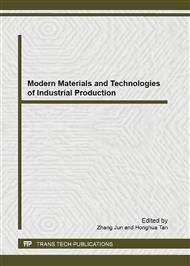p.192
p.196
p.200
p.205
p.213
p.218
p.223
p.228
p.234
Relationship between Microstructure and Mechanical Properties for Recycled Aggregate Concrete
Abstract:
Microstructure is an important factor that influences the mechanical properties of recycled aggregate concrete (RAC). This paper was devoted to an investigation of the relationship between mechanical properties and porosity, hydrate, microstructure of interfacial transition zone (ITZ) in RAC. The result showed that mechanical properties of RAC can be further enhanced with lower porosity, and there was a good linear relation, whereas it did not exist between compressive strength of RAC and average pore diameter. Fine active particles and the hydrate were formed into the cracked and loose layer of ITZ in RAC by A tripe mixing method (TM). Through SEM observation, it is expected that the compressive strength of the RAC can be improved by modifying the porous microstructure and hydrate in ITZ.
Info:
Periodical:
Pages:
213-217
Citation:
Online since:
September 2013
Authors:
Price:
Сopyright:
© 2013 Trans Tech Publications Ltd. All Rights Reserved
Share:
Citation:


